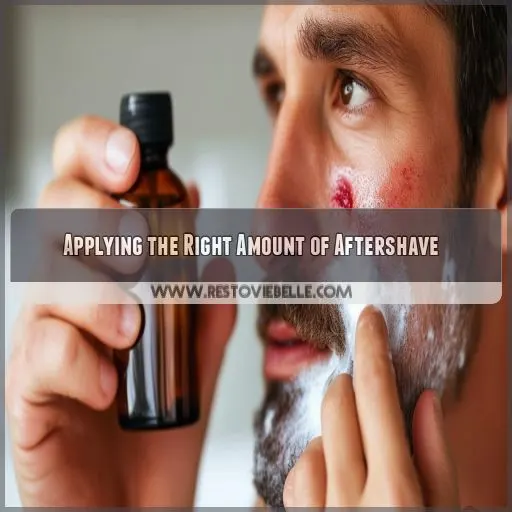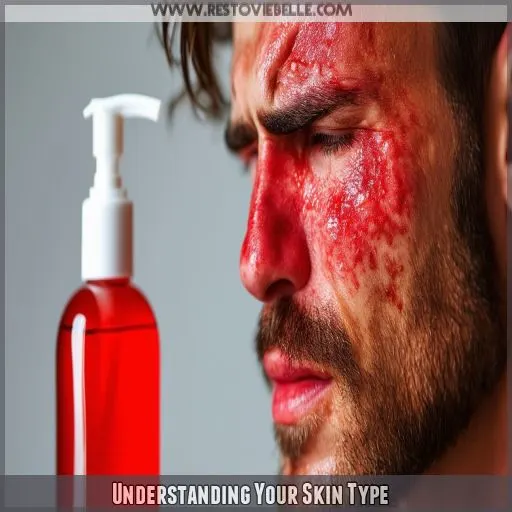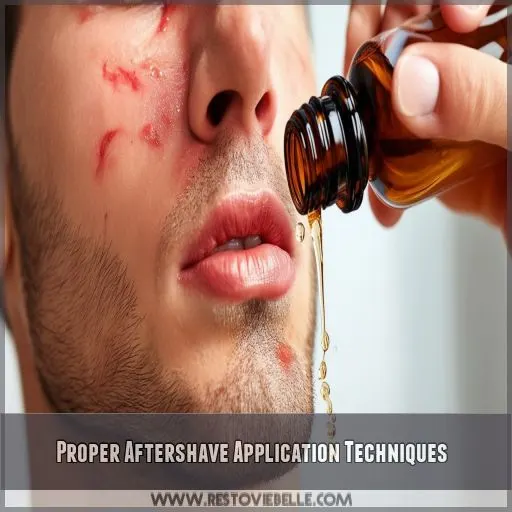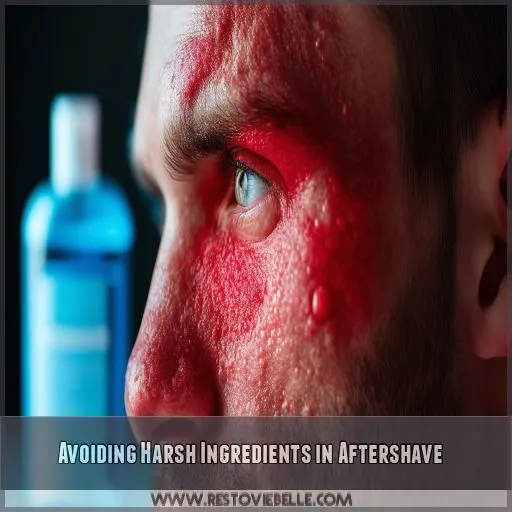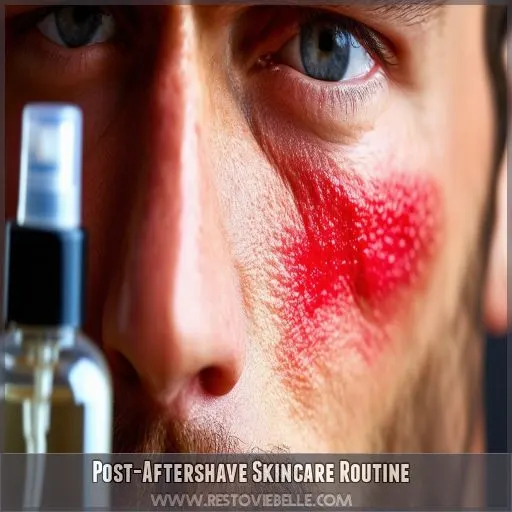This site is supported by our readers. We may earn a commission, at no cost to you, if you purchase through links.
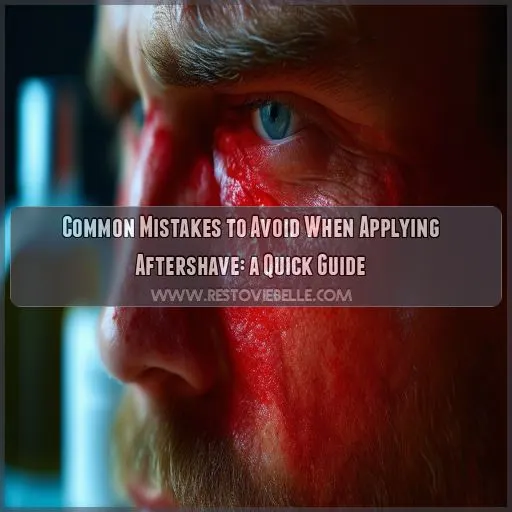 Wearing aftershave seems easy enough, but there are common mistakes to avoid.
Wearing aftershave seems easy enough, but there are common mistakes to avoid.
From applying the right amount to understanding your skin type, you’ll learn how to make the most of your aftershave.
Table Of Contents
- Key Takeaways
- Applying the Right Amount of Aftershave
- Understanding Your Skin Type
- Proper Aftershave Application Techniques
- Avoiding Harsh Ingredients in Aftershave
- Post-Aftershave Skincare Routine
- Frequently Asked Questions (FAQs)
- What should you avoid in aftershave?
- How to apply aftershave properly?
- What to look for when buying aftershave?
- What to do if you put on too much aftershave?
- How do I know if Ive applied too much aftershave?
- What if I have sensitive skin?
- How do I apply aftershave to my face?
- Are there any ingredients I should avoid?
- Whats a good post-aftershave skincare routine?
- Conclusion
Key Takeaways
- Finding the sweet spot with aftershave is key. You don’t want to go overboard and end up smelling like a perfume counter. A little goes a long way, especially on your pulse points.
- Knowing your skin type is a game-changer. Sensitive souls need to steer clear of alcohol and go natural, while dry skin craves balms for a hydration hit. Oily skin? Go for a splash or lotion to keep things fresh.
- Timing is everything. Apply aftershave right after shaving, while your skin is still damp. Lock in that moisture and let the aftershave work its magic.
- Keep it kind and gentle on your skin. Skip the harsh stuff and always read the ingredients. Alcohol and certain synthetics can be irritating, so go for natural, plant-based goodness.
Applying the Right Amount of Aftershave
Aftershave is all about finding the right balance. Too much can be overpowering and irritating to the skin, especially if it’s alcohol-based. You want enough to feel refreshed and smell great, but not so much that it becomes overwhelming.
Aftershaves vary in concentration and scent strength, so it’s important to understand your chosen product. A few factors influence how much aftershave to use, including its concentration, your skin type, and even your body chemistry. Pulse points, like your wrists and neck, radiate body heat and help diffuse the scent, so a small amount goes a long way in these areas.
Application tips: Start with a small amount, you can always add more if needed. A few drops, gently massaged into your skin, should be enough. Avoid the temptation to overdo it, especially if you’re new to a particular scent or brand. Remember, less is more when it comes to aftershave.
Understanding Your Skin Type
Knowing your skin type is really important when you’re picking an aftershave. Sensitive skin, for example, needs alcohol-free aftershaves with natural ingredients like witch hazel, tea tree oil, aloe vera, chamomile, and lavender. These natural ingredients help to soothe and calm the skin, reducing the risk of irritation.
On the other hand, if you have dry skin, opt for balms, which are thicker and better at locking in moisture. This is especially important if you live in a cold or dry climate. For oily skin, go for splashes or lotions—these tend to be watery and contain toners or astringents to help balance your skin. Gels are ideal for normal to oily skin, as they absorb quickly and are perfect for humid climates or if you tend to sweat more.
Proper Aftershave Application Techniques
Timing and technique are really important when you’re applying aftershave. You want to make sure you’re getting the most out of your aftershave and enjoying a pleasant fragrance experience without irritating your skin.
The key is to apply aftershave right after shaving while your skin is still damp. This helps lock in moisture and makes the product feel even better on your skin. Dispense a small amount, about a dime-sized drop, into your palm and gently rub your hands together. Then, using a gentle, downward motion, massage the aftershave onto your face and neck. Focus on areas where you’ve shaved, as this helps calm any irritation and provides a cool feeling. Remember, a little goes a long way, so avoid overdoing it.
Avoiding Harsh Ingredients in Aftershave
Choosing the right aftershave ingredients is super important, especially if you have sensitive skin. Here are some tips to help you avoid harsh ingredients and keep your skin happy:
- Opt for alcohol-free, natural ingredients: Alcohol can be drying and irritating, especially if you have sensitive skin. Look for aftershaves with natural ingredients like witch hazel, tea tree oil, aloe vera, chamomile, and lavender. These ingredients are gentle and have soothing properties.
- Understand your skin’s sensitivity: If you know your skin is sensitive to certain ingredients, avoid aftershaves that contain them. Common irritants include witch hazel and tea tree oil. Instead, choose an alum block, which is a gentle, natural alternative to traditional aftershaves.
- Choose an aftershave balm: If you have dry skin, an aftershave balm can be a lifesaver. Balms are thicker and more moisturizing, providing a protective layer for your skin. They’re perfect for dry skin or cold climates.
- Read the ingredient list: Always read the ingredient list before purchasing an aftershave. Avoid products with harsh chemicals or ingredients you know your skin doesn’t agree with. The simpler the ingredient list, the better.
Post-Aftershave Skincare Routine
Now that you know how to avoid harsh ingredients, let’s talk about the post-aftershave skincare routine.
Aftershave products can sometimes be drying, so it’s important to rehydrate your skin after application. Opt for a lightweight, non-comedogenic moisturizer to replenish your skin’s moisture barrier. If you have sensitive skin, look for calming ingredients like aloe vera or chamomile.
In addition to hydration, you might also want to incorporate a soothing serum or facial oil into your routine. These products can help reduce any redness or irritation caused by shaving and promote healthy, glowing skin.
Exfoliation is another key step in your post-aftershave skincare routine. A gentle exfoliating scrub or chemical exfoliant will help remove any dead skin cells, preventing ingrown hairs and promoting smoother skin. However, be cautious not to over-exfoliate, especially if you have sensitive skin.
Finally, don’t forget the importance of sunscreen. Shaving can make your skin more sensitive to the sun, so always finish your routine with a broad-spectrum sunscreen to protect your skin from UV damage.
Frequently Asked Questions (FAQs)
What should you avoid in aftershave?
If you want to avoid a harsh, dry sting, skip aftershaves with alcohol. Instead, opt for natural, plant-based ingredients like witch hazel, tea tree oil, jojoba oil, or coconut oil.
How to apply aftershave properly?
First, rinse your face with cold water to close your pores. Then, pour a small amount into your palm and rub your hands together. Finally, gently massage the aftershave onto your face in a downward motion.
What to look for when buying aftershave?
When buying aftershave, check the ingredients. Natural ingredients like plant extracts, nut and vegetable oils, and essential oils are best. Avoid synthetic fragrances and dyes, which can irritate skin. Go for something with shea butter or natural oils like avocado, coconut, or almond. If you have dry skin, avoid alcohol. And remember, you should like the scent.
What to do if you put on too much aftershave?
If you’ve applied too much aftershave, don’t worry—the scent is usually lighter, so it’s hard to overdo it. However, some people are sensitive to strong fragrances, so be mindful of that.
How do I know if Ive applied too much aftershave?
If someone can smell your aftershave from a distance, you’ve probably overdone it. People may snicker or whisper behind your back, and you might even find that your friends avoid you.
What if I have sensitive skin?
If you have sensitive skin, opt for an alcohol-free aftershave with natural ingredients like witch hazel, tea tree oil, aloe vera, chamomile, and lavender. Avoid aftershaves with artificial dyes and other chemicals, which can irritate your skin.
How do I apply aftershave to my face?
Wash your face with lukewarm water, then pour aftershave into your palm and rub your palms together. Gently massage the aftershave onto your face and neck in a downward motion.
Are there any ingredients I should avoid?
If you have acne-prone skin, avoid aftershaves with alcohol, oils, and sulphates, as these can clog pores and cause breakouts. Steer clear of parabens, too—they’re toxic preservatives.
Whats a good post-aftershave skincare routine?
After applying aftershave, you can use a post-shave balm to hydrate and protect your skin. You can also try a serum, gel, or moisturizer to keep your skin hydrated and healthy.
Conclusion
So, there you have it—a quick guide to help you navigate the potential pitfalls of aftershave application. By following these simple tips, you can make sure you’re getting the most out of your aftershave and avoiding any common mistakes. Now you’re all set to spritz and go, smelling and feeling fresh without any of the fuss.

